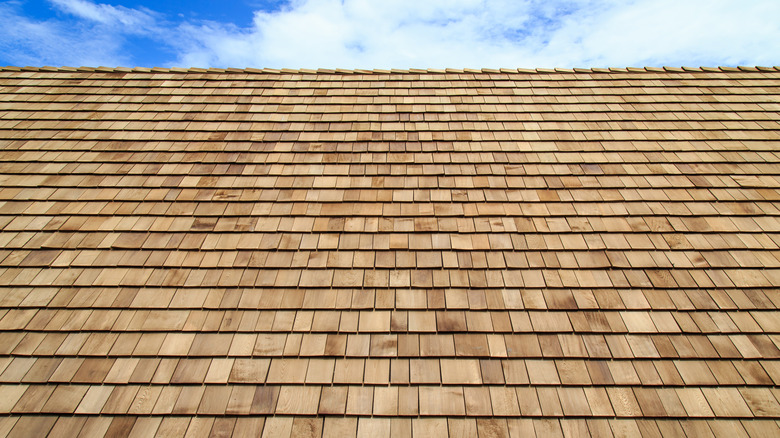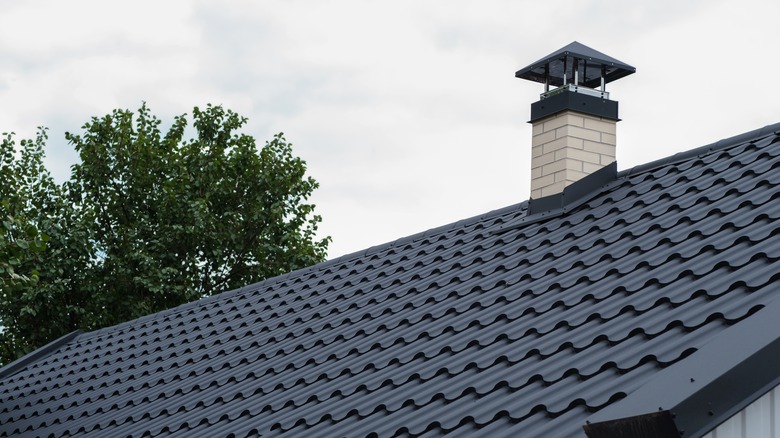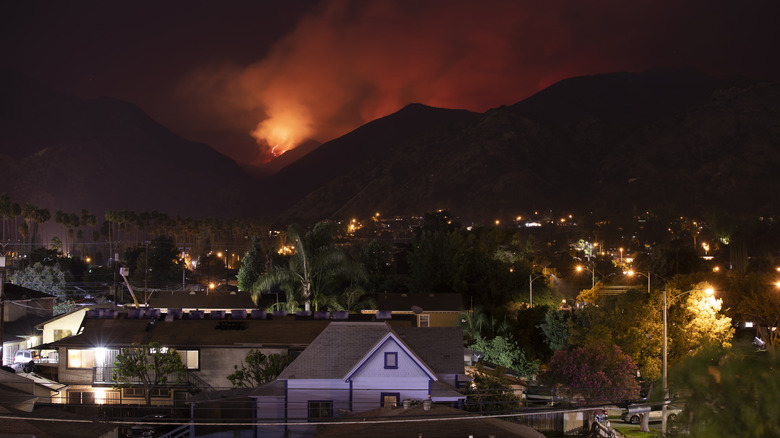The Roofing Material That's Banned In Los Angeles, California
Choosing a roofing material goes beyond style and aesthetics. A key thing to consider is the climate of the region and what types of weather and elements you can expect. If you live in a climate that is very humid, rainy, or cold, you'll need a roof that is best suited for those conditions. This is why the City Council in a fire-prone area like Los Angeles, California, had to reevaluate its residents' use of certain wood roofing materials.
In 1989, Los Angeles became the first major city to ban new untreated wood shingle roofs and reduce the additional devastation caused by flammable roofs during wildfires. At the time of the vote, around 30% of homes in the city had this roof type, and it was required to be treated with fire-resistant material. The county fire department, however, stated that wood roofs treated with such material still posed a danger because it didn't prevent them from combusting and spreading by shooting off embers onto other surfaces. The law didn't affect existing roofs but banned the use of wood shingles in constructing new homes and in replacing over 10% of an existing roof. Homes with untreated wood shingle roofs were given a two-decade time period to make the transition to better alternatives. Currently, the Los Angeles Fire Department states that any home within the Mountain Fire District (MFD) or Fire Buffer Zone (FBZ) must have flame-retardant roofing materials. Those living outside of those zones who would like to use pressure-treated shingles for 10% or less of a building, they are able to seek approval from the Department.
Alternatives
Did you know there is a rating system for fire-resistant roofs? Any untreated wood shakes or shingles, or plywood are classified as Class C roofing because they provide protection only in the event of a light fire. Shakes and shingles that have been treated with fire-resistant material are classified as Class B roofing. They are ideal in the case of a moderate fire. Class A roofing is the best class in severe situations like wildfires. Some of the materials in this class are metal, slate, clay tiles, and concrete tiles. They are non-combustible and able to withstand high temperatures.
In addition to being fire-resistant, metal roofs are durable and can even reflect heat to keep a home cool in the hot season. Slate roofs are very long-lasting and add an elegant, natural look to a home. Clay and concrete are also good materials in fire-prone regions like Los Angeles because they are weighty enough to stay in place during high winds. Want an alternative that looks like real wood? Certain companies are meeting this demand by reproducing the wood look with roof shingles that are Class A fire-resistant, water-resistant, and mold-resistant.
The wildfire phenomenon
There are various reasons that wildfires are so common in California. The dry climate (usually coupled with long droughts), dry vegetation, and dry winds all work together to make it highly prone to wildfires. When the fires start, these factors allow them to spread quickly and easily. The rising temperatures and other effects of climate change also contribute to this phenomenon.
In 1991, the Oakland firestorm around northern Oakland and southeastern Berkeley claimed lives and destroyed a lot of homes. It was intensified by strong winds and spread because of the dryness in the hills. It was also the driving force behind this ban on wood shingle roofs in Los Angeles. Reducing the combustibility of homes and house materials is just one piece of the puzzle, however, and other measures need to be taken in these regions. Homes need better defensible spaces, less vegetation that allows fires to spread, and better emergency plans and procedures, per Stanford experts.


